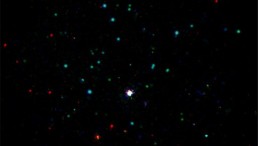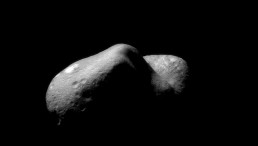On that fateful night of April 15, 1912, the seemingly unsinkable RMS Titanic hit an iceberg and sunk for hours, killing over a thousand passengers.
More than a century later, a new study proposes that the RMS Titanic was slightly thrown off course by the Northern lights present during that night. According to a U.S.-based meteorological researcher, the Titanic's last night of sailing at the Atlantic ocean was illuminated by the aurora borealis.
The researcher based her study on the accounts of the eyewitness during that night and argues that the geomagnetic storm might have been large enough to affect the navigation system of the Titanic to a small but significant degree.
She believes that the interference might have disrupted the wireless transmission between the Titanic and other nearby vessels, which blocked the distress calls and messages from the sinking ship. However, the magnetic disruption may have also offset the error by accidentally sending the Titanic's broadcast position to another vessel, which leads it to the correct location of the titanic's lifeboats.
With high enough intensity, solar flares can cause damage. An example of this is the 'Carrington Event' in 1859 when storm-induced currents in telegraph wires that operators received shocks due to the pylons that sparked.
If such an incident happened today, it would most likely cause a potential tragedy like the sinking of the Titanic.
Northern Lights Present When the RMS Titanic Sank
Mila Zinkova, an independent weather researcher and retired computer programmer, said that most writers who write about the Titanic do not know that the northern lights were present on that fateful night when the ship sunk. A small interference on the navigation system can make a big difference, she added.
One of the survivors of the sinking ship was the author Lawrence Beesley who described finding the aurora borealis after the ship sunk as "a faint glow in the sky ahead on the starboard quarter, the first gleams, we thought, of the coming dawn."
At first, they were not sure of what light they saw as they were just glad of being saved from the unfortunate event. But later on, they realize that it was the Northern lights.
Similarly, second officer James Bisset of the RMS Carpathia, who was the Cunard line passenger steamer bound for Fiume in Austria-Hungary that came to the rescue of the survivors, said that he saw the Northern light an hour before the Titanic struck the iceberg.
He noted on his log that the weather was calm and the sea smooth with no wind. That time, the sky was clear, and the stars were shining so brightly, but there was no moon in sight; only the aurora borealis glimmered like moonbeams seen from the northern horizon.
READ: Salvaging RMS Titanic's Marconi Radio Directly at Odds With Underwater Cultural Heritage
Solar Flares Caused Errors in Navigation but Also Saved the Survivors
The solar flares may have slightly influenced the navigation system of the Titanic, but it seems that it influenced as well the other vessels nearby.
RMS Carpathia, a Cunard line passenger steamer bound to Flume, received incorrect coordinates, which led them to the Titanic's driving sailboats at some 13.5 nautical miles from the actual location of the Titanic.
Zinkova attributed this event to the solar flare-induced compass errors and said that the light from the aurora has become beneficial to rescue operations as RMS Carpathia succeeded in rescuing all 705 survivors from the 20 lifeboats of the Titanic.
READ MORE: OceanGate Plans Manned Voyage To 3D Scan RMS Titanic In November 2017
Check out more news information about the Titanic only on Science Times.














